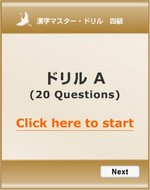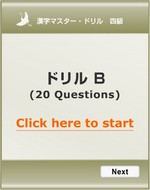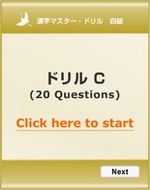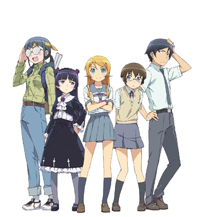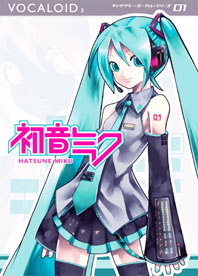Part 6: 百 千 万 円 本 買 高 安 新 古
百 : ヒャク
Meaning: hundred Shape: 一 + 白
|
Click to see the stroke order animation.
| Word | Reading | Meaning | Class |
|---|---|---|---|
| 百 | ひゃく | hundred | n |
The pronunciation changes when it follows after particular numbers. 百<hyaku>, 二百<ni-hyaku>, 三百<san-byaku>, 四百<yon-hyaku>, 五百<go-hyaku>, 六百<rop-pyaku>, 七百<nana-hyaku>, 八百<hap-pyaku>, 九百<kyū-hyaku> See numbers page for more details. |
|||
| 八百[屋] | やおや | vegetable shop, green grocer | n |
千 : セン、ち
|
Meaning: thousand
|
| 千 | せん | thousand | n |
The pronunciation changes when it follows after 三. 千<sen>, 二千<ni-sen>, 三千<san-zen>, 四千<yon-sen>, 五千<go-sen>, 六千<roku-sen>, 七千<nana-sen>, 八千<has-sen>, 九千<kyū-sen>, See numbers page for more details. |
|||
万 : バン、マン
|
Meaning: ten thousand
|
| 万 | まん | ten thousand | n |
10,000 is 一万, not just 万. 一万<ichi-man>, 二万<ni-man>, 三万<san-man>, 四万<yon-man>, 五万<go-man>, 六万<roku-man>, 七万<nana-man>, 八万<hachi-man>, 九万<kyū-man>, 十万<jū-man> See numbers page for more details. |
|||
| 万年[筆] | まんねんひつ | fountain pen | n |
円 : エン、まる(い)
|
Meaning: circle
|
| ~円 | ~えん | _Yen (currency unit) | n |
百円<100 yen>, 五千円<5,000 yen>, 十五万円<150,000 yen> |
|||
| 円い | まるい | round, circular | i-adj |
Another Kanji 丸い has the same reading and meaning. 丸い is used more often. |
|||
本 : ホン、もと
Meaning: book
|
| 本 | ほん | book | n |
| ~本 | ~ほん | counter for long, thin objects | n |
The pronunciation changes when it follows after particular numbers. 一本<ip-pon>, 二本<ni-hon>, 三本<san-bon>, 四本<yon-hon>, 五本<go-hon>, 六本<rop-pon>, 七本<nana-hon>, 八本<hap-pon>, 九本<kyū-hon>, 十本<jup-pon> |
|||
| 本[棚] | ほんだな | bookshelf | n |
| 日本 | にほん, にっぽん | Japan | n |
There are two ways of reading - nihon and nippon. Both can mean Japan (name of a country). There is no rule which should be used in which case. For the international sports games, nippon is usually used. |
|||
買 : バイ、か(う)
Meaning: to buy Shape: 四 + 貝
|
| 買う | かう | to buy, to purchase | 1-v |
本を買いました。 I bought a book. |
|||
| 買い[物] | かいもの | shopping | n |
高 : コウ、たか、たか(い)、たか(まる)、たか(める)
Meaning: high, tall, expensive Shape: Symbolizing the shape of a tall building.
|
| 高い | たかい | high, tall | i-adj |
ふじさんは、日本で一ばん高いです。 Mount Fuji is highest in Japan. |
|||
| 高い | たかい | expensive | i-adj |
このカメラは、高いです。 This camera is expensive. |
|||
安 : アン、やす(い)
Meaning: easeful, untroubled, calm, inexpensive Shape: Symbolizing a woman secured under the roof.
|
| 安い | やすい | inexpensive, cheap | i-adj |
新 : シン、あたら(しい)、あら(た)、にい
|
Meaning: new Shape: 立 + 木 + 斤
|
| 新しい | あたらしい | new | i-adj |
古 : コ、ふる(い)、ふる(す)
Meaning: old Shape: 十 + 口. Symbolizing the concept "old" by the shape of an ancestor's skull with decorations on the top.
|
| 古い | ふるい | old | i-adj |
Unlike English, 古い is not used for living beings. Correct: 古い本<old book> Wrong: 古い人<old person> |
|||
Writing Practice
Printable writing practice sheet is available at Kanji Writing Practice page.
Stroke Order Rules (2)
 |
When lines are crossed, the horizontal line first, then the vertical line. (There are some exceptions such as 五 and 九.) |
|---|---|
 |
When diagonal lines are crossed or touched, the line to the left first, then the line to the right. |



